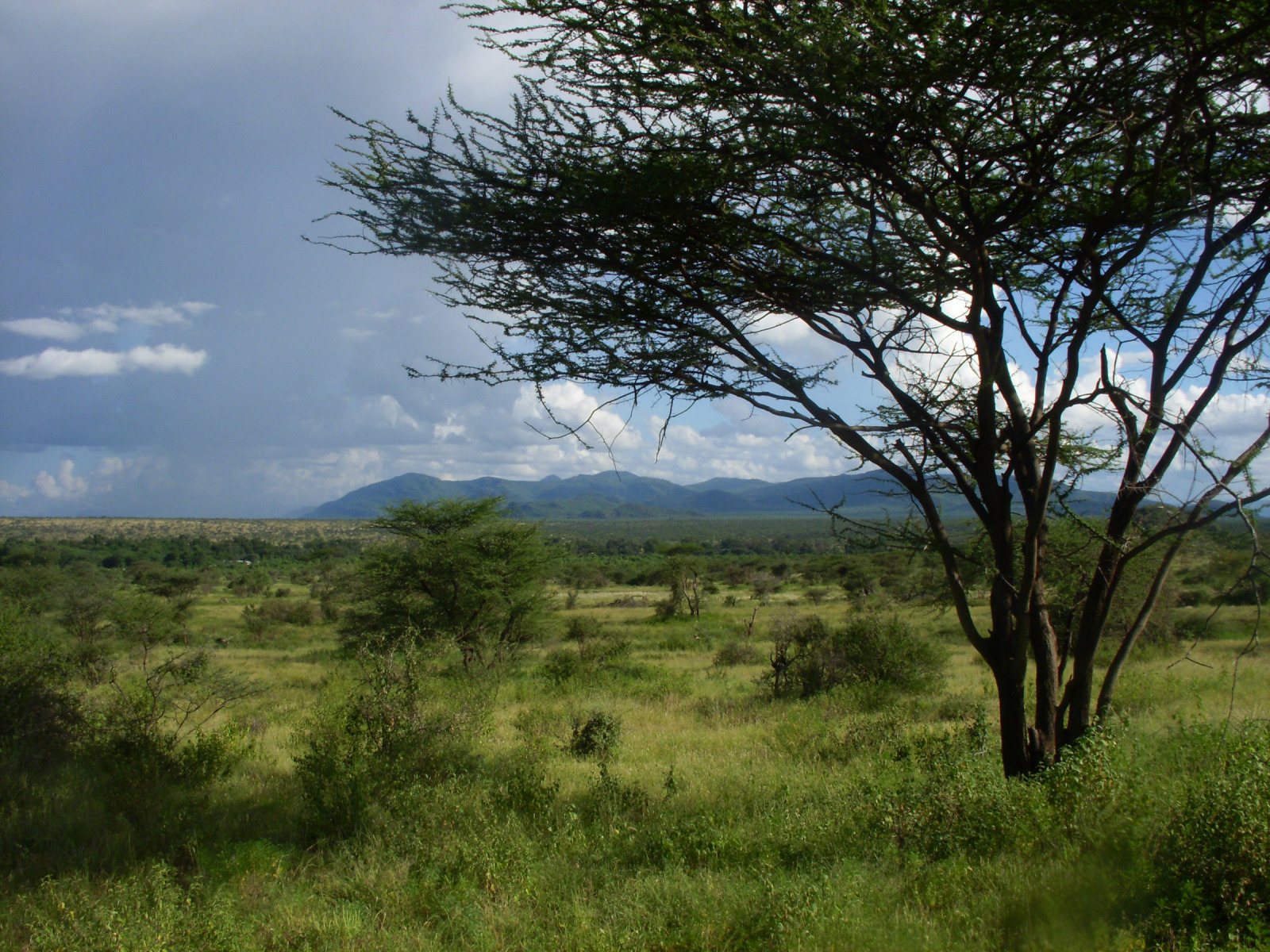Humans descend from a line of sun-lovers, scientists have shown.
A new technique that can determine how tree-covered a site was up to seven million years ago has been pioneered by researchers at the University of Utah. And by applying the approach to ancient fossilised soil samples containing pre-human remains,  they've been able to show that, almost universally, where you find open, lightly-wooded areas, you find our early evolutionary ancestors.
they've been able to show that, almost universally, where you find open, lightly-wooded areas, you find our early evolutionary ancestors.
The team, led by Thure Cerling, made the discovery by comparing satellite images of the tree-cover from 75 sites worldwide with the ratios of two isotopes of carbon, carbon-12 and carbon-13, contained in 3000 soil samples from the imaged sites. This revealed a characteristic carbon-fingerprint associated with each of the different savannah-type habitats.
Open, grassy areas, they found, had higher ratios of carbon-13 than tree-dominated terrains. This is because trees and shrubs use what is known as C3 photosynthesis, which favours lower utilisation of the heavier carbon-13 isotope. Tropical grasses, on the other hand, use C4 photosynthesis, an adaptation developed by plants to compensate for lower carbon dioxide concentrations and higher average temperatures and also incorporates higher ratios of the carbon-13 isotope.
Using this relationship, the team then looked at more than 1300 fossil soil samples (called palaeosols) collected and analysed historically from sites in East Africa at or near to where human ancestors were active. The samples go back 7.4 million years to a time overlapping the period when the hominids and apes first split apart from a common ancestor about 6 million years ago.
At over 70% of the sites studied there would have been less than 40% tree-cover, the carbon data reveals, meaning the terrain was lightly-wooded or open grassland. Fewer than 1% of the samples reflected sites where tree cover exceeded 70%. Looking over time, the researchers also found that the amount of tree-cover had changed dramatically, ranging from 5% at some points to as high as 75% at other times, although open areas still remained during these more wooded phases.
According to Cerling, "We conclude that there have been open savannahs all the time for which we have hominin fossils, in the environments where the fossils were found during the past 4.3 million years [the time corresponding to the oldest fossils accepted as human ancestors]"
- Previous Making brains from skin
- Next Bioengineering to Beat Back Pain










Comments
Add a comment